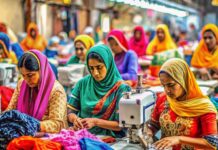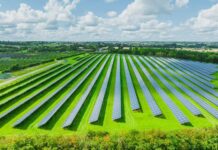The need for creative solutions that tackle both food security and energy needs is becoming more pressing in view of fast-moving climate change and a growing world population. Being a major source of greenhouse gas emissions and a resource-intensive sector, agriculture has always been questioned for its environmental impact. Often regarded as one of the most promising renewable energy sources, solar power helps to shape a cleaner, more sustainable energy future as the globe works towards that goal. But what if we could combine two important industries—agriculture and energy—to solve these problems at once? Cotton Voltaics fits in here.
Cotton Voltaics is the idea of putting solar panels over or next to crops, thus integrating agricultural output with solar energy generation. This concept offers a thrilling chance to use agricultural land for both renewable energy generation and food production without the need for additional land use. The possibilities for Cotton Voltaics are great; one crop that offers significant hope for this technology is cotton.
Cotton fields are extensively scattered over the globe, particularly in dry and semi-arid locations where sun radiation is abundant. Traditionally, cotton growing calls for significant land and water use, leading to soil depletion and water shortages. Placing solar panels atop cotton farms, however, could help to solve these problems by not only producing clean energy but also enhancing water retention, lowering evaporation, and protecting the crops from severe weather conditions. This strategy might provide farmers with a much-needed increase in income by allowing them to produce power alongside their main crop.
Merging Agriculture with Solar Energy represents a major development as the globe moves towards a future that prioritizes sustainability. Using the synergy between solar energy and cotton cultivation, a win-win situation may be created for the energy and agricultural industries. This paper will explore the concept of Cotton Voltaics, its advantages, its obstacles, and its hopeful future for sustainable agricultural methods.
Advantages of Cotton Voltaics
Cotton Voltaics presents several benefits that could transform the agricultural landscape. This innovative idea maximizes land utilization, strengthens farm resilience, and offers financial advantages to farmers by integrating two vital industries—energy and agriculture.
Growing Cotton and Producing Solar Energy on Dual Land Use
One of the most attractive advantages of Cotton Voltaics is its capacity to allow farmers to use the same area for both cultivation and renewable energy generation. Historically, farmers have had to choose between using land for solar energy systems or food crops. By placing solar panels above cotton fields, Cotton Voltaics solves this problem and ensures that both crops and energy generation flourish simultaneously.
Farmers can benefit from two income sources: payments for the solar power they produce and cotton sales. This additional revenue can help stabilize finances, reduce the uncertainty associated with fluctuating crop prices, and ultimately make agriculture more sustainable.
Reduced Evaporation and Improved Water Retention
Cotton growing is quite water-intensive, especially in dry areas. Cotton Voltaics provides a promising solution by enhancing soil water retention. Solar panels help to reduce evaporation, thereby lowering the soil surface temperature and minimizing water loss. This added shade also protects cotton plants from excessive heat, promoting better growth and reducing irrigation needs.
Protection against Extreme Weather Conditions
Agricultural industries face increasing risks from storms, intense winds, and heatwaves as climate change exacerbates weather extremes. Cotton Voltaics can act as a protective barrier, safeguarding crops from damaging environmental factors, thus stabilizing production in challenging conditions.
Sustainable Farming Practices and a Lowered Carbon Footprint
The integration of solar energy generation into farming practices through Cotton Voltaics drastically reduces the carbon footprint of cotton cultivation. This strategy aligns with the growing demand for sustainable agricultural practices that mitigate environmental impact and enhance the profitability of farming operations.
Future Possibilities of Cotton Voltaics
Cotton Voltaics holds significant potential beyond its current applications. As technology and agricultural practices evolve, the future of Cotton Voltaics can play a crucial role in sustainable agriculture in the 21st century. Supporting policies and investment incentives will be vital for widespread adoption, and ongoing technological advancements will enhance its viability.
Conclusion
Cotton Voltaics offers a sustainable solution to pressing global challenges, including climate change, water shortages, and energy needs. It maximizes farm productivity, improves water conservation, and provides farmers with a reliable income from solar power. As we look to the future, the integration of solar energy with cotton agriculture will pave the way towards a more resilient, energy-independent, and environmentally friendly farming sector.
Now is the time to expand pilot projects, enhance affordability, and create regulations that support sustainable agrivoltaic solutions. Cotton Voltaics is not just a concept—it represents a pathway to the future of farming.






























